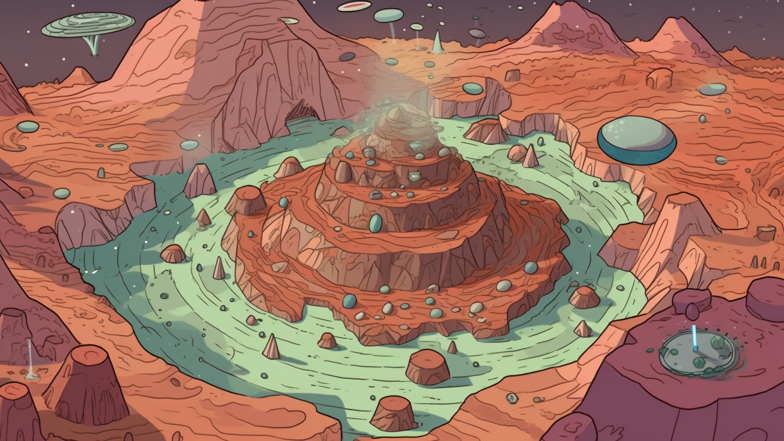Exploring the Mysteries of Astrogeology: Uncovering the Secrets of Planetary Formation and Evolution.

The story of our solar system began billions of years ago when a cloud of gas and dust collapsed under its own gravity, giving birth to our sun and the planets. The inner rocky planets, including Mercury, Venus, Earth, and Mars, formed close to the sun, where temperatures were high enough for metals and rocks to condense and accumulate. These bodies are characterized by dense, rocky surfaces, and are separated by wide intervals of empty space.
The four outer gas giants -Jupiter, Saturn, Uranus, and Neptune - formed far from the sun in the cold outer regions of the solar system. These planets are composed mostly of gas and ice, and are much larger and less dense than their rocky counterparts. They are also accompanied by a vast network of moons and other small bodies, each with its own unique geology and history.
One of the most fascinating aspects of astrogeology is the study of impact craters, which result from collisions of meteorites and other objects with planets and moons. These craters not only reveal the history of cosmic bombardment that has shaped our solar system over billions of years but can also provide insights into the planet's internal structure and composition. By analyzing the size, shape, and distribution of craters, scientists can estimate how old the planet's surface is and the type of material that underlies it.
Another important process shaping the planets' surface is volcanism. Volcanic activity is responsible for the creation of vast plains, towering mountains, and other geological features. On Earth, for example, volcanoes have played a crucial role in shaping the planet's continents and atmosphere, and may have even played a part in the emergence of life. Similarly, on Mars, volcanic activity has shaped the planet's surface and atmosphere, with the towering Olympus Mons being the largest volcano in the solar system.
The study of planetary atmospheres is also a crucial aspect of astrogeology. The atmosphere plays a crucial role in shaping the planet's climate, weather, and tectonic activity. The Earth's atmosphere, for example, is responsible for weather patterns, including the formation of hurricanes and tornadoes. Similarly, the thin atmosphere on Mars has hampered the planet's prospects for life by preventing the retention of liquid water on its surface.
One of the most exciting areas of astrogeology is the study of exoplanets, planets beyond our solar system. Advances in telescope technology have allowed scientists to identify hundreds of exoplanets, some of which may be capable of supporting life. The study of exoplanets presents unique challenges, as they are often too far away to be studied directly. However, by analyzing the light emitted by these planets as they pass in front of their host stars, scientists can infer their composition, temperature, and other characteristics.
In recent years, astrogeologists have also begun to study planetary geology in the context of astrobiology, the study of the origins and evolution of life in the universe. By examining the geological processes that shaped the planets and other bodies, scientists can gain insights into the conditions that may have been necessary for life to emerge and flourish. For example, the recent discovery of underground lakes on Mars has raised the possibility of life existing on the Red Planet, hidden from the harsh surface conditions.
In conclusion, the field of astrogeology offers a fascinating glimpse into the history and evolution of our solar system and the wider universe. From the formation of our sun and planets to the complex geological processes that shape their surface, this field brings together knowledge from multiple disciplines to uncover the secrets of the cosmos. As we continue to explore and study the wonders of the universe, the mysteries of astrogeology are sure to captivate us for years to come.
Comments
Post a Comment